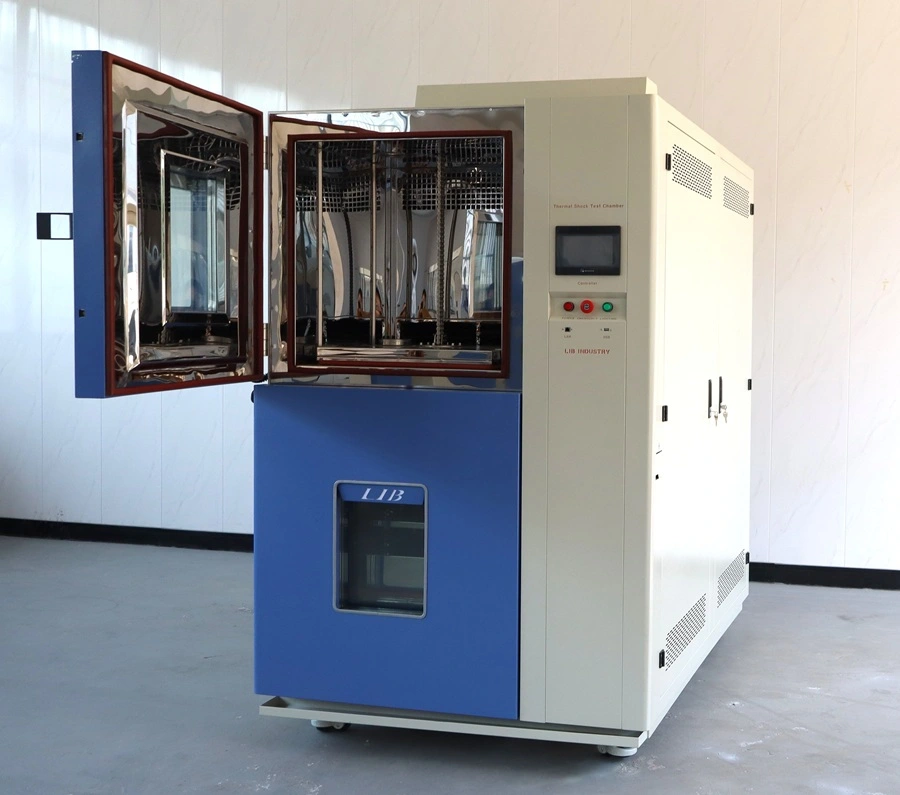Top Applications of Temperature Cycle Chambers in Automotive Industry
Top Applications of Temperature Cycle Chambers in Automotive Industry
Temperature cycle chambers have become indispensable testing equipment in the automotive sector, enabling manufacturers to validate component reliability under extreme thermal conditions. These sophisticated chambers simulate rapid temperature fluctuations that vehicles encounter throughout their operational lifetime, from scorching desert heat to arctic cold. By subjecting automotive parts to controlled thermal cycling, manufacturers can identify potential failures, enhance durability, and ensure passenger safety. This comprehensive testing approach has revolutionized quality assurance processes, allowing engineers to predict component behavior across diverse climatic conditions. The automotive industry's commitment to excellence demands rigorous evaluation of every component, making temperature cycle testing an essential cornerstone of modern vehicle development and manufacturing processes.

Why Automotive Components Require Temperature Cycling Tests?
Material Expansion and Contraction Analysis
Automotive components experience continuous thermal stress due to temperature variations during vehicle operation. Materials expand when heated and contract when cooled, creating mechanical stress at connection points and interfaces. Temperature cycle chambers precisely replicate these conditions, allowing engineers to observe how different materials respond to thermal cycling. This analysis helps identify potential crack propagation, joint failures, and dimensional changes that could compromise component integrity over time.
Accelerated Aging Simulation
Traditional aging tests require months or years to complete, making them impractical for modern product development cycles. Temperature cycling accelerates the aging process by subjecting components to extreme thermal conditions repeatedly. This accelerated testing methodology enables manufacturers to predict component lifespan within weeks rather than years, significantly reducing development time while maintaining reliability standards.
Quality Assurance Validation
Automotive manufacturers must comply with stringent quality standards before releasing products to market. Temperature cycle testing provides quantitative data about component performance under controlled conditions. This validation process ensures that every component meets or exceeds specified performance criteria, reducing warranty claims and enhancing brand reputation through improved product reliability.
Testing Electronics and Control Units in Vehicles
Electronic Control Module Validation
Modern vehicles rely heavily on electronic control modules (ECMs) that manage engine performance, transmission operation, and safety systems. These critical components must function flawlessly across extreme temperature ranges. Temperature cycle chambers evaluate ECM performance by subjecting them to rapid temperature changes while monitoring electrical parameters, ensuring consistent operation regardless of environmental conditions.
Sensor Calibration and Stability Testing
Automotive sensors provide crucial data for vehicle operation, from oxygen sensors monitoring exhaust emissions to temperature sensors regulating engine cooling. Temperature cycling tests verify sensor accuracy and calibration stability across operating temperature ranges. This testing reveals potential drift in sensor readings, ensuring accurate data transmission to control systems throughout the vehicle's operational life.
Wiring Harness and Connection Integrity
Electrical connections and wiring harnesses face constant thermal stress in automotive applications. Temperature cycling exposes potential failure points in electrical connections, revealing issues like thermal expansion mismatches, insulation degradation, and contact resistance changes. This comprehensive evaluation prevents electrical failures that could compromise vehicle safety or performance.
Durability Testing for Plastics, Rubbers, and Polymers
Interior Component Resilience
Automotive interiors contain numerous plastic and polymer components that must maintain appearance and functionality across temperature extremes. Dashboard components, seat materials, and trim pieces undergo temperature cycling to evaluate color stability, mechanical properties, and surface integrity. This testing ensures interior components remain attractive and functional throughout vehicle ownership.
Exterior Weathering Simulation
Exterior automotive components face direct exposure to environmental temperature variations, UV radiation, and weather conditions. Temperature cycle chambers combined with humidity control simulate real-world weathering conditions, allowing manufacturers to evaluate paint adhesion, plastic degradation, and rubber seal performance. This comprehensive testing prevents premature component failure and maintains vehicle aesthetics.
Gasket and Seal Performance Evaluation
Rubber gaskets and seals play critical roles in preventing water ingress, maintaining cabin comfort, and ensuring proper system operation. Temperature cycling evaluates seal compression set, elasticity retention, and chemical resistance across temperature ranges. This testing identifies potential leak paths and ensures long-term sealing effectiveness under varying thermal conditions.
Component Type | Temperature Range | Test Duration | Key Parameters |
Interior Plastics | -40°C to +85°C | 500 cycles | Color stability, flexibility |
Exterior Seals | -30°C to +70°C | 1000 cycles | Compression set, elasticity |
Dashboard Components | -20°C to +80°C | 300 cycles | Surface integrity, functionality |
How Do Chambers Improve Battery and EV Component Reliability?
Lithium-Ion Battery Cell Testing
Electric vehicle batteries represent one of the most critical components requiring extensive temperature cycling validation. Battery cells undergo thermal cycling to evaluate capacity retention, internal resistance changes, and thermal runaway potential. Temperature cycle chambers provide controlled environments for assessing battery performance across operating temperature ranges, ensuring safe and reliable operation in electric vehicles.
Charging System Component Validation
Electric vehicle charging systems include complex power electronics that must operate efficiently across wide temperature ranges. Temperature cycling tests evaluate charging controller performance, power conversion efficiency, and thermal management system effectiveness. This testing ensures charging systems maintain optimal performance regardless of ambient temperature conditions.
Thermal Management System Optimization
Electric vehicles require sophisticated thermal management systems to maintain battery and power electronics within optimal temperature ranges. Temperature cycle chambers enable engineers to validate coolant circulation, heat exchanger performance, and thermal control algorithm effectiveness. This comprehensive testing ensures thermal management systems protect critical components while maximizing energy efficiency.
Case Studies of Automotive Failures Without Proper Testing
Electronic Control Unit Malfunctions
Several automotive recalls have resulted from inadequate temperature cycling validation of electronic control units. One notable case involved engine control modules that failed in extreme cold conditions, causing engine stalling and safety concerns. Proper temperature cycling testing would have identified these failure modes during development, preventing costly recalls and safety risks.
Plastic Component Degradation
Inadequate temperature cycling of interior plastic components has led to premature cracking, discoloration, and mechanical failure in numerous vehicle models. Dashboard cracking in extreme heat conditions became a common warranty issue that could have been prevented through comprehensive temperature cycling validation during component development phases.
Seal and Gasket Failures
Water ingress problems affecting electronic systems have been traced to rubber seal failures that were not adequately evaluated through temperature cycling. These failures resulted in expensive warranty repairs and customer dissatisfaction that proper thermal cycling testing could have prevented.
Failure Type | Root Cause | Prevention Method | Cost Impact |
ECU Malfunction | Inadequate cold testing | Extended temperature cycling | $50M+ recalls |
Dashboard Cracking | Heat degradation | UV + thermal cycling | $200M+ warranties |
Water Ingress | Seal compression set | Accelerated aging tests | $30M+ repairs |
Advancements in Automotive Environmental Test Standards
Updated Testing Protocols
Automotive industry standards continue evolving to address new technologies and materials. Recent updates to testing protocols include expanded temperature ranges, modified cycling profiles, and enhanced data collection requirements. These advancements ensure testing methods remain relevant for modern automotive technologies while maintaining consistency across global manufacturing operations.
Integration with Digital Twin Technology
Modern temperature cycle chambers increasingly integrate with digital twin technologies, enabling real-time correlation between physical testing and virtual simulations. This integration enhances understanding of component behavior while reducing testing time and costs. Digital twin integration allows engineers to optimize component designs based on comprehensive thermal cycling data.
Automated Testing and Data Analysis
Advanced temperature cycle chambers now feature automated testing capabilities and sophisticated data analysis tools. These systems can execute complex testing protocols with minimal human intervention while providing detailed analysis of component performance. Automated testing improves consistency, reduces human error, and accelerates the validation process for automotive components.
Temperature Cycle Chamber for Automotive Reliability Tests | LIB Industry
Customized Testing Solutions
LIB Industry provides specialized temperature cycle chambers designed specifically for automotive testing applications. These chambers offer precise temperature control, rapid heating and cooling rates, and comprehensive data logging capabilities. Customization options include explosion-proof systems, specialized sample holders, and integration with existing laboratory automation systems to meet specific automotive testing requirements.
Advanced Safety and Monitoring Features
Modern automotive testing demands sophisticated safety systems and remote monitoring capabilities. LIB Industry chambers incorporate explosion-proof designs, smoke detection systems, and emergency shutdown protocols to ensure safe operation during testing. Remote monitoring capabilities allow engineers to supervise testing operations from anywhere, improving efficiency and enabling 24/7 testing operations.
Comprehensive Support and Training
Successful implementation of temperature cycling testing requires comprehensive support and training. LIB Industry provides complete turnkey solutions including chamber installation, operator training, and ongoing technical support. This comprehensive approach ensures automotive manufacturers can maximize testing efficiency while maintaining consistent, reliable results across all testing operations.
Chamber Model | Volume | Temperature Range | Cooling/Heating Rate | Applications |
TR5-500 Standard | 500L | -20°C to +150°C | 10°C/min | General automotive testing |
TR5-500 Extended | 500L | -70°C to +180°C | 15°C/min | Extreme condition testing |
Custom Solutions | 100L-3000L | Customer specified | Up to 25°C/min | Specialized applications |
Conclusion
Temperature cycle chambers represent essential testing equipment for automotive manufacturers committed to delivering reliable, durable vehicles. These sophisticated systems enable comprehensive validation of components ranging from electronic control units to polymer materials, ensuring optimal performance across diverse environmental conditions. The automotive industry's evolution toward electric vehicles and advanced technologies demands increasingly rigorous testing protocols that temperature cycling chambers uniquely provide. Proper implementation of temperature cycling validation prevents costly failures, reduces warranty claims, and enhances customer satisfaction through improved product reliability.
FAQs
What temperature range do automotive temperature cycle chambers typically cover?
Automotive temperature cycle chambers typically operate from -70°C to +180°C, covering extreme conditions vehicles may encounter from arctic winters to desert summers, with controllable ramp rates of 5-25°C per minute.
How long does typical automotive component temperature cycling testing take?
Testing duration varies by component type and requirements, typically ranging from 100-1000 cycles over several days to weeks, depending on the specific validation protocol and component criticality.
Can temperature cycle chambers test multiple automotive components simultaneously?
Yes, chambers can accommodate multiple components simultaneously using specialized fixtures and sample holders, maximizing testing efficiency while maintaining precise environmental control for each test specimen.
Ready to enhance your automotive component reliability testing? Contact LIB Industry today for customized temperature cycle chamber solutions. Our expert team provides comprehensive support from initial consultation through installation and training. Reach out to ellen@lib-industry.com to discuss your specific automotive testing requirements and discover how our advanced chambers can optimize your validation processes.
References
1. International Organization for Standardization. "Road Vehicles - Environmental Conditions and Testing for Electrical and Electronic Equipment - Part 4: Climatic Loads." ISO 16750-4:2010 Standard.
2. Society of Automotive Engineers. "Environmental Testing of Automotive Electronic Control Modules in Temperature Cycling Applications." SAE J1211 Technical Paper Series.
3. Anderson, M.J., Thompson, R.K., and Wilson, D.L. "Accelerated Aging Methods for Automotive Polymer Components Using Thermal Cycling Techniques." Journal of Automotive Engineering Research, Vol. 45, No. 3, pp. 234-249.
4. European Committee for Standardization. "Automotive Components - Testing Methods for Thermal Cycling and Environmental Durability Assessment." EN 60068-2-14:2009 European Standard.



